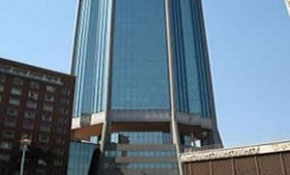Zim exports to EU up 269pc

Harare Bureau
Zimbabwe’s exports of fresh leguminous vegetables (peas and beans) to the European Union rose by 269 percent in the last five years, signalling the recovery of the local horticultural industry.
According to figures from the ZimTrade, leguminous exports to the EU rose from $5.4 million in 2010 to about $20 million last year.
While Zimbabwe’s exports significantly increased, the country’s market share remains at just 1.3 percent compared to other African suppliers such as Kenya and Egypt, which command a share of 10 and 4 percent respectively. The major market destinations in the EU are the UK, Netherlands and France.
“There’s therefore huge scope to increase Zimbabwe’s market share in the EU market given the country’s good climatic conditions, which are conducive for the production of peas and beans,” said ZimTrade.
It said local companies could utilise the duty free and quota free access applied to Zimbabwe’s exports to the EU region under the interim Economic Partnership Agreement. However, local producers are required to fulfil EU’s food quality and safety minimum standards.
During the same period, EU imported beans and peas with $1 billion, having increased by 35 percent from $780 million, the country’s export promotional body said.
The EU, which comprises 28 member states, is the largest economic bloc in the world with gross domestic product per capita of 25,000 euros (about $27,696) for its strong consumer base of 500 million people.
It consumes about 16.4 percent of world’s total imports and is also the world’s biggest exporter, accounting for 15 percent of the global total exports. The country’s horticultural industry, which is mainly involved in the production of fresh vegetables, citrus and flowers, has been on a rebound since 2010 following successive years of recession, which started on the turn of the millennium. Air cargo exports have been rising since 2012 mainly driven by vegetables and flowers.
As such, the government is now in the process of establishing an authority to promote growth of the industry.
The government is of the view that the sector is critical to the Zim-Asset programme and an entity that would promote growth of the industry is necessary.
The industry has potential to generate foreign currency and if local farmers are capacitated, they can create thousands of jobs, directly and indirectly.
Currently, Zimbabwe’s horticultural activities are co-ordinated by the Horticultural Promotion Council.
The organisation promotes and represents the interests of all producers of horticultural produce and liaises with all processors, exporters, traders, shippers of such produce as well as other businesses involved in the horticultural industry.
Zimbabwe used to be one of the largest exporters of a wide range of horticultural products in Africa, supplying overseas markets including Europe and the Middle East. For instance, citrus exports peaked in 2001 at 45,000 tonnes, being 60 percent of fresh produce output.
Zimbabwe also became a valuable exporter of cut flowers, and by 2001, it was ranked as the second largest in Africa, behind Kenya, second among African, Caribbean and Pacific exporters, and was the fifth biggest exporter to the European Union.
Russia has since expressed interest in Zimbabwe’s fresh produce and is looking at ways of capacitating local farmers to increase production. Russia responded to the European Union sanctions against Russian banks and businesses by banning all imports of fresh produce from Europe and it is now looking at alternative markets.











Comments